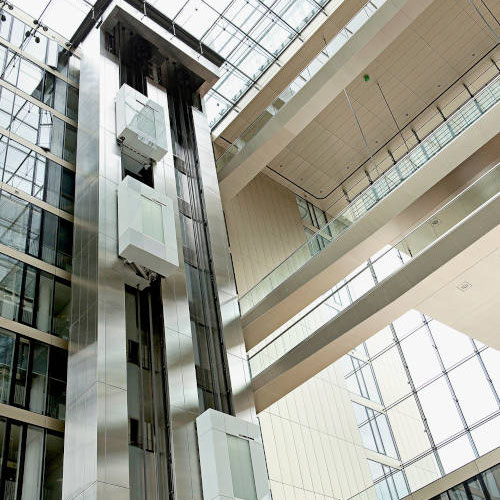
The elevator has evolved from being a luxury product serving a small proportion of the urban population to a more functional and efficient means of moving the general public. Safety and energy efficiency have taken centre-stage. There is a growing demand for high-speed, high-capacity, energy efficient, smart elevators that can carry many passengers at once, safely and comfortably, particularly in high-rise office buildings, commercial complexes, and other large-scale facilities. New innovations are leading to the introduction of energy efficient elevators that not only consume less energy, but also produce clean energy. New technologies and best practices involving motors, regeneration converters, control software, optimization of counterweights and cabin lighting can yield significant savings. New elevators provide efficiency gains of about 30-40 per cent than buildings with older lifts. Taking into consideration the upward trend of buildings, now going up to 1,000 meters, elevators, escalators, and moving walkways play an important part in creating safe, sustainable and self-sufficient structures that dramatically reduce the overall energy used in buildings. The key factor in their contribution to sustainability is that it is not just environmental, but also economical, thereby appealing to all stakeholders in the urbanization process. Key features of the energy efficient elevators are deployment of permanent magnet synchronous (PMS) gearless traction machines, which consume up to 50 per cent less energy than conventional geared machines and usage of regenerative drive technology. This feeds energy back into the building's power grid during the motor's generative mode (when the car is lightly loaded and moving up or heavily loaded and moving down). Adding the regenerative feature can reduce energy consumption of the elevator by up to 50 per cent. Other energy-saving measures include the extensive use of light-emitting diodes (LED) in elevator cabs and escalators, which can offer up to 80 per cent energy savings, while providing the same luminance as traditional lights and a lifetime 10 times longer. LED lights also emit low heat and minimal radiation. Other lift loads i.e., standby loads, doors, lights, fans for ventilation, safety devices, automatic controls, sensors, etc. can be made energy efficient too. Lifts consume energy even when they are not raising or lowering loads. This energy consumption can represent more than 90 per cent of the total electricity consumption in lifts with a low number of daily trips and is attributable to equipment that is constantly working, such as control systems, lighting, ventilation, floor displays and operating consoles in each floor and inside the lift cabin. In addition to the use of efficient components, energy can be saved by switching off equipment, or putting it in a low energy mode, when not being used. As mentioned earlier, during low demand periods, shutting down completely one or more lifts within a group can also be a good energy saving option, without compromising the quality of the service. Usually, the building has a very high energy consumption percentage as compared to other economic sectors. They are responsible for consuming 30-45 per cent of global energy demand. The advent of net-zero energy system, which can be used for existing elevators too, marks a milestone moment for the building industry and opens the door to more energy-savvy technologies being implemented to tackle resource scarcity. “Energy creating” elevators are already popular, converting the elevator’s kinetic energy into electricity that can be fed back into the building’s power grid. But the new net-zero concept goes one step further, focusing on improving energy efficiency even when the elevator is idle, which can be as much as 70 per cent of its working life. The design uses new controllers which trigger “hibernation” or “sleep” modes in idle cabins thus significantly reducing the energy demand. The required energy can be generated using solar panels no larger than the footprint of the elevator shaft, creating net-energy positive systems that generate more energy than they consume.



































